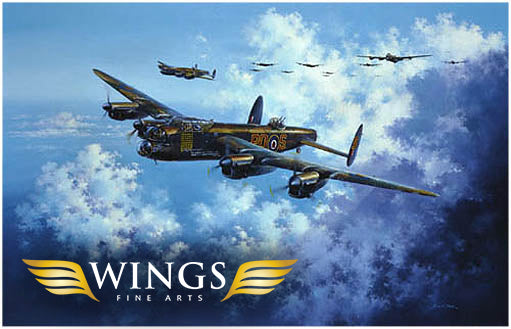Tropical Duties by Richard Taylor - Aviation Art
- Variant: Limited Edition
- In Stock: 20
- Brand: Wings Fine Arts
- Collection: All Aircraft
Product Specs
Tropical Duties
By Richard Taylor
On Wednesday 22 June 1938 a new sound was heard over the humid streets of Singapore as four Bristol Pegasus radial engines heralded the arrival of the RAF’s newest flying-boat - the Short Sunderland. For the men of 230 Squadron gathering on the slipway at Seletar, the approaching aircraft looked formidable and even from a distance, they could spot the powerful array of .303 machine guns it possessed. The squadron had been flying Short Singapores ever since they arrived here two years earlier but now, with war looming and recognising the strategic importance of Singapore, the Squadron had been chosen as one of the first units to be re-equipped with the world’s most advanced flying boat - the Sunderland.
With a range approaching 3,000 miles it was ideal for the long-range maritime reconnaissance patrols it would need to cover the vast expanse of the Indian Ocean, especially following Japan’s entry into the war and the fall of Singapore. Sunderlands would play a vital role in protecting the convoys to India and supplying isolated bases across the Indian Ocean. As the war progressed, Sunderland flying-boats were increasingly used to attack enemy shipping between Burma and Malaya in the Bay of Bengal, and over a 32 day period in the summer of 1944 two Sunderlands from 230 Squadron evacuated 537 critically wounded soldiers from the Chindit special forces by landing on a lake deep behind enemy lines in Burma.
Overall size: 22½" x 34"
-
THE LIMITED EDITION (375 PRINTS): $165 USD
-
THE ARTIST PROOF (25 PRINTS): $225 USD
-
THE REMARQUE (25 PRINTS): $450 USD
-
THE DOUBLE REMARQUE (10 PRINTS): $675 USD
Remarqued editions are signed by all the veterans and include a superb original pencil Remarque hand drawn below the image. The first, an edition of 25, will have a single drawing. The second edition, restricted to only ten copies, will have a magnificent double size drawing overflowing with detail.
The Signatories
Flight Lieutenant William Hallisey RAFVR
Working as a Customs and Excise Officer at the outbreak of war he was finally allowed to enlist in January 1941, in the RAF Volunteer Reserve. After training he was selected to become a Flying Instructor and spent three years in Canada, sometimes flying anti-submarine patrols from Halifax, Nova Scotia in Lockheed Hudsons. Receiving an operational posting to 202 Squadron in April 1944 and based in Gibraltar as a Captain on Catalina PBYs, he took part in Operation Cork to protect the extreme western flank of the D-Day landings from U-boats. In April 1945 he was posted to the Far East where he flew Sunderlands with 230 Squadron against retreating Japanese coastal vessels, where he also gave informal night-flying training. Following the Japanese surrender he then helped to ferry recently liberated Allied POWs out of Singapore and back to India.
Flight Lieutenant Graham Stevens RAF
Called up in 1941, he completed his Pilot training with the US Navy in Pensacola, Florida and was selected to fly Catalina flying
boats in the maritime reconnaissance role. Initially posted to 270 Squadron in West Africa as a 2nd Pilot, he and his crew were tasked
with patrolling over the South Atlantic gathering information on enemy maritime activity. As the war in Europe drew to a close, he
completed a Captain’s conversion course and re-trained to fly the Short Sunderland. As Victory of the Japanese approached he joined
230 Squadron in Madras to begin what was the most satisfying period of his service, piloting repatriation flights flights for Allied POWs from Singapore to begin the first leg of their journey home.
Flight Lieutenant William ‘Eddie’ Bardgett RAF
Volunteering for duty with the RAF, after training he was posted to 230 Squadron in Madras where he was “2nd Dickie” to Graham
Stevens as Captain of Sunderland aircraft “P-Peter”. He was briefly re-assigned to another crew when his Captain went down with malaria, serving with Flight Lieutenant Edwards as part of a two aircraft detachment dispatched to the island of Labuan which, after the Japanese surrender, was also home to P-51 Mustangs of the RAAF. Upon his former Captain’s recovery, he was reunited with him at RAF Seletar in Singapore where they took part in many repatriation flights together ferrying recently released POWs and wounded troops back to India for their trip home.






